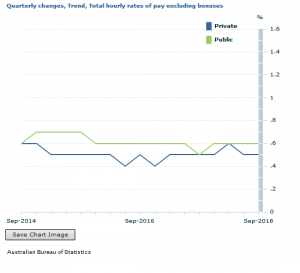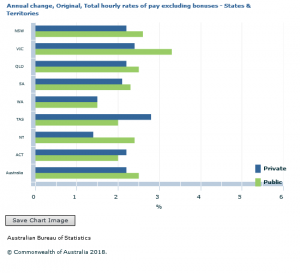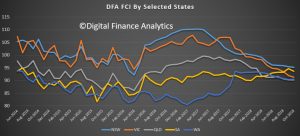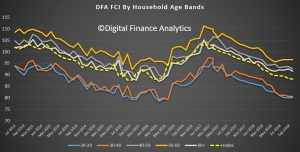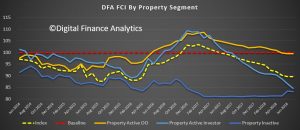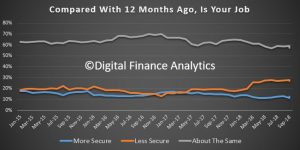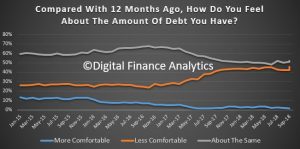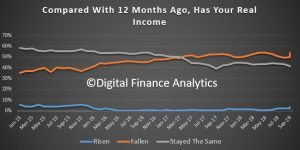In a joint statement, Treasurer Josh Frydenberg and the Minister for Small and Family Business, Skills and Vocational Education, Michaelia Cash, have announced that the Australian Business Securitisation Fund (ABSF) will “significantly enhance” the ability for small businesses to access funds by providing “significant additional funding to smaller banks and non-bank lenders to on-lend to small businesses on more competitive terms”.
The Australian Business Securitisation Fund will be administered by the Australian Office of Financial Management (AOFM), which was previously involved in the Residential Mortgage Backed Securities Market in 2008.
Speaking on Wednesday (14 November), the two ministers said: “Small businesses find it difficult to obtain finance other than on a secured basis – typically, against real estate. Small businesses that have already obtained finance secured against real estate, but wish to continue to grow, also find it difficult to access additional funding.
“Even when small businesses can access finance, funding costs are higher than they need to be.
“To overcome this and ensure that small businesses are able to fulfill their potential and continue to underpin economic growth and employment, the Australian Business Securitisation Fund will invest up to $2 billion in the securitisation market, providing significant additional funding to smaller banks and non-bank lenders to on-lend to small businesses on more competitive terms.”
The government has also reiterated that it will “encourage the establishment of an Australian Business Growth Fund to provide longer term equity funding”.
It is now in consultation with the prudential regulator (APRA) and several financial institutions in regard to the establishment of the fund, which could likely emulate overseas counterparts, such as the UK’s Business Growth Fund. This fund has reportedly invested around $2.7 billion in a range of sectors across the economy.
The ministers said: “Many small businesses find it difficult to attract passive equity investment which enables them to grow without taking on additional debt or giving up control of their business.
“A similar fund has not emerged in Australia, in part, as a result of the unfavourable treatment of equity for regulatory capital purposes.”
APRA has reportedly suggested that it is “willing to review these arrangements” to assist in facilitating the establishment of the Australian Business Growth Fund.
The government has said that it will host a series of meetings with stakeholders during the next sitting period in Canbera to “fast track” the establishment of the growth fund.
“With more than three million small businesses employing around seven million Australians, enhancing small business access to funding is part of the Coalition Government’s plan for a stronger economy,” the ministers said in a joint release.
Several players in the finance sector have welcomed the announcement, with NAB’s chief customer officer, business and private banking, Anthony Healy, saying that “the country’s largest business bank recognised that for Australia to continue to grow, SME businesses need better and easier access to capital”.
Mr Healy highlighted that NAB had been providing unsecured lending to small businesses through its QuickBiz channel, “helping SMEs borrow against the strength and cash flow of their business rather than physical bricks and mortar”.
He continued: “The Australian Business Growth Fund can help this further by providing a way in which SMEs can receive long term equity capital investments to grow their business, invest in new technology and create more jobs, which is why NAB is supportive of the concept.
“We do believe there is more that can be done to provide SMEs with access to equity capital, and we take confidence from the UK Business Growth Fund having operated successfully for several years.
“We look forward to further discussions with the federal government and other participants about the fund’s potential establishment soon,” said Mr Healy.
Likewise, Spotcap’s managing director, Lachlan Heussler, said: “Mr Frydenberg’s proposal meets a real financial need and is a win-win for both Australian small business owners and for the alternative lending industry in Australia.
“Without sustainable lending and affordable finance options, small and medium-sized businesses will struggle to grow, innovate and create more jobs for our economy.”
Mr Heussler continued: “Australia’s 2.2 million small and medium-sized businesses are the beating heart of our economy but are starved of working capital and under-served by traditional lenders who require security.
“By lowering borrowing costs, the proposed fund is a good step in increasing competition between the dominant, big lenders and online, unsecured lenders, such as Spotcap”.
The Council of Small Business Organisations Australia (COSBOA) likewise welcomed the news, with CEO Peter Strong stating: “We congratulate the hovernment, and the Treasurer Josh Frydenberg, on this decision. It’s a well needed game changer for financing of small businesses.”
Mr Strong said that securing access to affordable capital had become the “number one” challenge for small business owners in Australia, particularly as some banks had “relied solely on past earnings rather than taking future earnings potential into account”.
“As a result, if the business owner doesn’t have a house (or other major asset) to put on the line as security then they are stuck – and Australia misses out on the employment that can be generated by the future growth of these businesses,” he said.
Mr Strong continued: “Small business owners often tell me that the only time they can get a loan is when they no longer need it. Others have told me that they have had to travel overseas to get finance and, using the same business plan as they used in Australia, they get their loan. This was a crazy and damaging situation.”
Mr Strong continued: “It is by no means ‘free money’ but small businesses that are sound and have good growth potential will finally have access to affordable finance.”
Touching on the new growth fund, the COSBOA CEO stated: “Importantly, the Treasurer understands that the announcement would fail if the process of managing the funds is convoluted and complex.
“We, with others, have already been asked to join in designing the system to make sure it is fit for purpose and not made unfit by interference from those who don’t understand our sector. We look forward to working with the Morrison Government, the Treasurer, the Small Business and Family Enterprise Ombudsman and other stakeholders to make these two funds accessible for small business owners and start-ups.”

